
Ghana’s industrial sector continues to grow on the back of government policies, in spite of several challenges and the difficult global economic conditions, providing employment and foreign exchange for the country. The government’s flagship programme for the sector, the One District One Factory policy, is meant to spur local production, reduce dependence on exports and make use of the abundant natural resources around the country. The main segments of the sector are agro-processing, textiles and footwear, electronics and household appliances, cocoa processing, and engineering and machine tools..
According to the Food and Agriculture Organisation (FAO), paddy rice production in Ghana grew from 688,000 tonnes in 2016 to 973,000 tonnes in 2020. Consumption of rice in Ghana however consistently outstrips local production. In 2020, 1.6 metric tonnes of rice was consumed in the country, up from 1.2 metric tonnes in 2016. The gap has been filled by imports, which rise every year to meet demand. The FAO estimates that 72,138 tonnes of chicken meat was produced in Ghana in 2020, way below the 400,000 tonnes that was consumed in that year. The cost of feed is a challenge for local producers and the shortfall has been made up with imports. In 2020, chicken, the most popular source of animal protein, was the 6th most-imported product into the country.
Figures from the FAO show that 22 million tonnes of cassava were produced in Ghana in 2020, making Ghana the second largest producer in Africa and fourth in the world. Despite this, Ghana still has a deficit in industrial starch and cassava flour, which indicates that there is a gap in industrial capacity in the country. Government is seeking a private partner to revamp the Komenda Sugar Factory, one of two defunct local producers, to help meet the consumption of sugar for both domestic and industrial purposes, which far surpasses local production capacity. Similarly,
some of the 300,000 tonnes of processed tomatoes consumed in Ghana annually is imported from outside the country.
Ghana is the second largest grower of cocoa in the world. While most of it is exported in the raw state, the government established the Cocoa Processing Company in 1965 to process some of the produce into finished goods, in order to add value and get more foreign exchange. Following the implementation of economic liberalisation policies in the 1980s, private sector players entered the cocoa processing sector and have since been contributing significantly to the drive to process an increasing portion of the country’s cocoa exports. Of the $2.1

billion of cocoa exports from Ghana in 2020, more than 20 per cent of it was already processed in the form of cocoa paste, cocoa butter, and chocolates.
The textile sector in Ghana consists of ginneries and textile mills producing batik, wax cloth, and fancy printed cloth. It also includes the production of traditional materials such as kente and the Ghanaian smock. The footwear produced in the country comes in leather, rubber and textile versions. Ghana consistently records deficits in trade with relation to textiles and footwear. In 2020, textiles and rubber footwear were the 6th and 9th most imported products in Ghana respectively.
Ghana currently has a dearth of local manufacturers in the electronics subsector and this is reflected in the trade deficits in semi-conductors, computers, telephones, refrigerators, video displays, and radio receivers among others. Household expenditure on electronics and household appliances has been forecast to grow consistently across PCs, mobile handsets, and audio-visual categories for the period from 2022 to 2025.
There are few significant operators in the Ghanaian engineering and machine tools industry. There are however a lot of artisans who operate from large parks, such as Suame Magazine in Kumasi, and smaller ones around the country where auto tools and parts are sold. The market is currently dominated by distributors of imported machinery and machinery tools. In addition, many international auto brands have dealerships established in the country to supply imported vehicle parts. The

government has recently cut the sod for the construction of a modern machinery foundry and tooling centre in Accra, designed to plug the deficit in domestic manufacturing.
The Ministry of Finance projects that production from manufacturing will grow steadily over the period from 2022 to 2025. Production capacity is expected to increase due to the execution of various programmes and policies initiated to increase local manufacturing capacity. The Ministry of Trade and Industry has launched the Ghana Business Regulatory Reforms portal that will provide a platform for constant interaction between policymakers and business organisations. A Computer Numerical Control (CNC) machine tools centre is being built at the Ghana Atomic Energy Commission in Accra which, when completed, will produce machinery and tools for the agro-processing, automobile assembling, aluminium products, and farming industries. The African Continental Free Trade Area and the One District One Factory scheme are also expected to attract investor interest and spur increased activity in the sector.

The manufacturing sector is overseen by the Ministry of Trade and Industry, while agencies such as the Ghana Standards Authority, Ghana Export Promotions Authority, Ghana Free Zones Authority and Foods and Drugs Authority are responsible for the certification, licensing, inspection and promotion of various aspects of the sector.
SECTOR OPPORTUNITIES
• Opportunities to invest in the processing of 2 million metric tonnes of bauxite, upgrading of Volta Aluminum Company Limited’s plants and facilities or the establishment of a new aluminium smelter with a capacity of up to 500,000 metric tonnes
• Partnership with the Ghana Integrated Iron and Steel Development Corporation to develop and process iron ore, significant quantities of which have been discovered in the Upper West and Oti regions
• The acceleration in the building of infrastructure, including the construction of 111 hospitals and the Cocoa Roads Improvement Programme, provides a huge opportunity to produce construction materials in the country
• The establishment of one factory in every district, one industrial park in each region, among many other government initiatives also presents an opportunity to players in the construction materials sector
• Opportunities to establish or partner with existing cashew-producing factories, the majority of which are inactive or producing at less than 10 per cent capacity
• Opportunities to invest in cassava processing, which despite the abundance of inputs, is operating far below capacity in the country
• Partnership with the government in the establishment and management of a foundry and machine tooling centre.
■TG
The launching of the Africa Continental Free Trade Agreement (AfCFTA) in July 2020 could provide impetus to Ghana’s trade development agenda in terms of increased market access and increased value. The full implementation of AfCFTA will create the largest free trade area in the world, connecting 55 countries with a combined USD3.4 trillion market economy of 1.3 billion people. This is expected to boost intra-African trade, promote industrialization, create jobs, and improve the competitiveness of African industries on the global stage. The Government’s new export strategy seeks to leverage the manufacturing sector to diversify the export base, including trade in services, and to integrate deeper into global value chains. In October 2020, the government launched the new National Export Development Strategy, which envisages growth in non-traditional exports from $2.8b to $25.3b over a 10-year period, to be accompanied by deep structural transformation and a competitive, export-led industrialized economy. Going forward, the government’s strategy is to achieve inclusive and sustainable growth, with trade and the private sec-
tor as the main drivers. The government’s aim is to build the most business-friendly economy in Africa through diversification of the export base, further integration into global value chains, and promotion of intraAfrican trade. At the industry level, Ghana’s top three sectors with the greatest untapped export opportunities were textiles and clothing, electronics, and chemicals. Potential exports should have been 43 times more than the observed export flows during 2010-2019, revealing an additional $1.5 in trade opportunities. Ghana’s exports of electronics should have been 51 times actual values, leaving room to realize an additional $1.3b of exports. Exports of chemicals, including pharmaceuticals, could have been 12.4 times higher, revealing $644million in untapped export opportunities.
Source: Boakye,Daniel Kwabena; Maur,Jean-Christophe; Maliszewska,Maryla; Vnukova,Yulia. Ghana – Trade Competitiveness Diagnostic Strengthening Ghana’s Trade Competitiveness in the Context of AfCFTA (English). Washington, D.C. World Bank Group. http://documents. worldbank.org/curated/en/099655006072229218/ P172400097c6b60e084f00ab2713bf1587



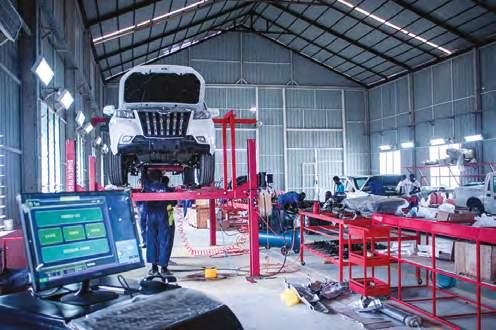
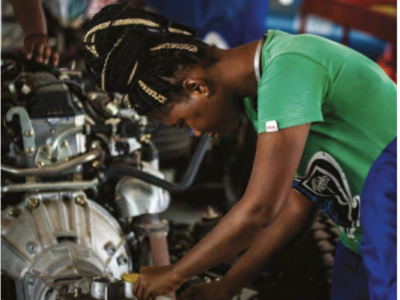
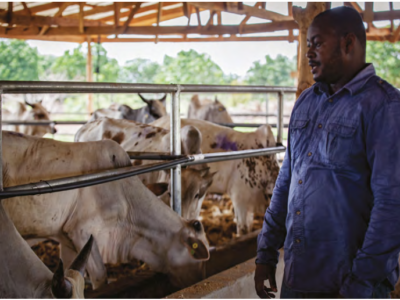







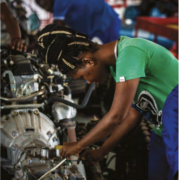
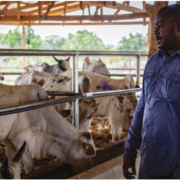
Comments